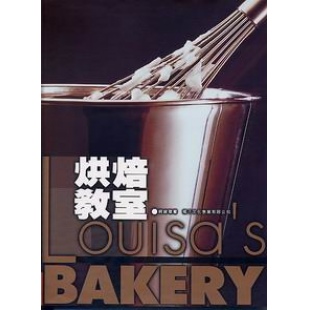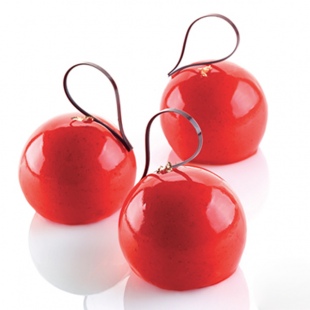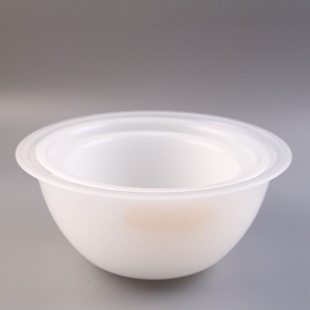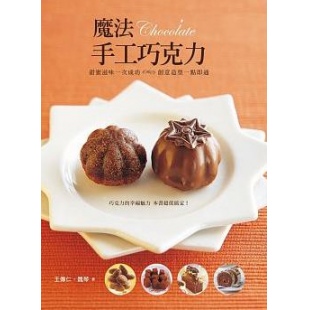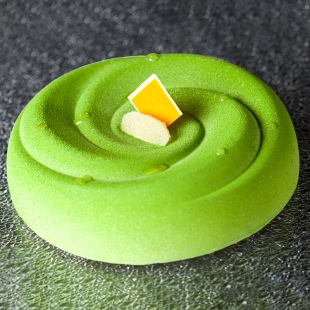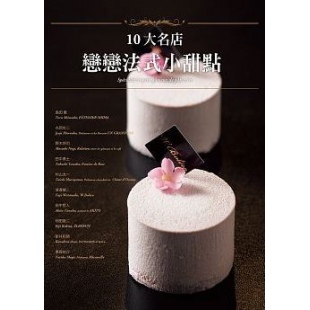- 相关推荐
浏览历史
Synopsis
This book provides an overview of the science and technology of chocolate manufacture, from cocoa production, through the manufacturing processes, to the nutrition and health aspects of chocolate consumption. Special attention is paid to cocoa bean composition, genotypic variations in the bean, post-harvest pre-treatments, fermentation and drying processes. The book outlines the scientific principles behind industrial chocolate manufacture, and provides detailed explanations of the various stages of chocolate manufacturing. A reference for all those in the business of making chocolate worldwide; also confectionery and chocolate scientists in industry and academia.
Table of Contents
Preface
Acknowledgements
About the author
1 Chocolate production and consumption patterns
1.1 History of cocoa and chocolate
1.2 World production and consumption of cocoa and chocolate products
1.2.1 World production and consumption of cocoa
1.2.2 World cocoa prices
1.2.3 World consumption of chocolate products
1.2.4 World consumption of premium chocolate products
1.3 Fairtrade cocoa and chocolate in modern confectionery industry
1.3.1 Future of Fairtrade cocoa and confectionery industry
1.4 The concept of this book
2 Cocoa cultivation, bean composition and chocolate flavour precursor formation and character
2.1 Introduction
2.2 Cocoa cultivation and practices
2.2.1 Cultivation of cocoa
2.2.2 Flowering and pod development
2.2.3 Harvesting and pod opening
2.2.4 Cocoa diseases and pests and their influence on chocolate quality
2.3 Bean composition and flavour precursor formation
2.3.1 Chemical composition of the bean
2.3.2 Polyphenols and chocolate flavour quality
2.3.3 Effects of proteins and sugars on flavour precursor formation
2.3.4 Microbial succession and enzymatic activities during flavour precursor generation in cocoa fermentation
2.4 Effect of genotype on cocoa bean flavours
2.5 Flavour development during post-harvest treatments of cocoa
2.5.1 Fermentation processes
2.5.2 Drying
2.6 Conclusion
3 Industrial chocolate manufacture – processes and factors influencing quality
3.1 Introduction
3.2 Cocoa processing and technology
3.2.1 Bean selection and quality criteria
3.2.2 Cleaning, breaking andwinnowing
3.2.3 Sterilisation
3.2.4 Alkalisation
3.2.5 Roasting
3.2.6 Nib grinding and liquor treatment
3.2.7 Liquor pressing
3.2.8 Cake grinding (kibbling)
3.2.9 Cocoa powder production
3.3 Chocolate manufacturing processes
3.3.1 Mixing
3.3.2 Refining
3.3.3 Conching
3.4 Tempering, lipid crystallisation and continuous phase character during chocolate manufacture
3.5 Particle size distribution in chocolate
3.6 Compositional effects on rheological and textural qualities in chocolate
3.6.1 The role of fats
3.6.2 The role of sugar
3.6.3 The role of milk and other dairy components
3.6.4 The role of surfactants in modern chocolate confectionery
3.7 Moisture and chocolate flow
3.8 Chocolate quality and defects
3.8.1 Chocolate quality
3.8.2 Chocolate defects
3.9 Conclusion and further research
4 The chemistry of flavour development during cocoa processing and chocolate manufacture
4.1 Introduction
4.2 Influence of bean selection on chocolate flavour quality
4.3 Effect of roasting
4.3.1 Maillard reactions – aldol condensation, polymerisation and cyclisation
4.3.2 Effects of alkalisation
4.4 Flavour development during chocolate manufacture
4.4.1 Conching
4.5 Key flavour compounds in milk chocolate
4.6 Key flavour compounds in dark chocolate
4.7 Conclusion
5 Sensory character and flavour perception of chocolates
5.1 Summary and industrial relevance
5.2 Introduction
5.3 Sensory perception of quality in chocolates
5.3.1 Appearance
5.3.2 Texture
5.3.3 Taste
5.3.4 Flavour and aroma
5.4 Sensory assessment of chocolates
5.5 Factor influencing chocolate flavour
5.6 Flavour release and perception of sweetness in chocolate
5.7 Dynamism of flavour perception in chocolate
5.8 Retronasal flavour release and perception during chocolate consumption
5.9 Measurement of flavour release and intensity in chocolates
5.10 Electronic noses and tongues as online sensors for sensory assessment of chocolates
5.11 Conclusion
6 Nutritional and health benefits of cocoa and chocolate consumption
6.1 Summary and significance
6.2 Introduction
6.3 Chemistry and composition of cocoa flavonoids
6.4 Chocolate types and their major nutritional constituents
6.5 Antioxidant properties and their mechanism of action
6.6 Effects on endothelial function, blood pressure and cardiovascular system
6.7 Effects on insulin sensitivity and carcinogenic properties
6.8 Cocoa, chocolate and aphrodisiac properties
6.9 Conclusion
7 Structure – properties (rheology, texture and melting) relationships in chocolate manufacture
7.1 Summary and industrial relevance
7.2 Introduction
7.3 Materials and methods
7.3.1 Materials
7.3.2 Preparation of chocolate samples
7.3.3 Determination of particle size distribution
7.3.4 Rheological measurements
7.3.5 Tempering procedure
7.3.6 Texture measurements
7.3.7 Colour measurements of solid dark chocolate
7.3.8 Microstructure analysis
7.3.9 Determination of melting properties of dark chocolates
7.3.10 Experimental design and statistical analysis
7.4 Results and discussion
7.4.1 Particle size distribution of molten dark chocolate
7.4.2 Rheological properties of molten dark chocolate
7.5 Relationships between casson model and ICA recommendations
7.6 Textural properties
7.6.1 Molten dark chocolate
7.6.2 Hardness of tempered dark chocolate
7.6.3 Colour measurements
7.6.4 Relationships between textural properties and appearance of dark chocolate
7.7 Microstructural properties of molten dark chocolate
7.8 Melting properties of dark chocolate
7.8.1 Effects of particle size distribution
7.8.2 Effects of fat content
7.8.3 Effects of lecithin
7.9 Relationships between rheological, textural and melting properties of dark chocolate
7.10 Conclusion
8 Tempering behaviour during chocolate manufacture: effects of varying product matrices
8.1 Summary and industrial relevance
8.2 Introduction
8.3 Materials and methods
8.3.1 Materials
8.3.2 Tempering procedure
8.3.3 Determination of particle size distribution
8.3.4 Experimental design and statistical analysis
8.4 Results and discussion
8.4.1 Particle size distribution of dark chocolates
8.4.2 Effect of particle size distribution on tempering behaviour
8.4.3 Effect of fat content on tempering behaviour
8.5 Conclusion
9 Tempering and fat crystallisation effects on chocolate quality
9.1 Summary and industrial relevance
9.2 Introduction
9.3 Materials and methods
9.3.1 Materials
9.3.2 Determination of particle size distribution
9.3.3 Tempering experiment
9.3.4 Texture measurements
9.3.5 Colour and gloss measurements
9.3.6 Image acquisition and capture
9.3.7 Determination of melting properties
9.3.8 Microstructural determinations
9.3.9 Scanning electron microscopy
9.3.10 Experimental design and statistical analysis
9.4 Results and discussion
9.4.1 Particle size distribution of dark chocolates
9.4.2 Fat crystallisation behaviours during tempering of dark chocolate
9.4.3 Effect of temper regime and PSD on mechanical properties
9.4.4 Effect of temper regime and PSD on colour and gloss
9.4.5 Effect of temper regime and PSD on melting properties
9.4.6 Effect of temper regime on microstructure
9.4.7 Effect of temper regime on scanning electron microstructure
9.5 Conclusion
10 Fat bloom formation and development in chocolates
10.1 Summary and industrial relevance
10.2 Introduction
10.3 Materials and methods
10.3.1 Materials
10.3.2 Determination of particle size distribution
10.3.3 Tempering experiment
10.3.4 Texture measurements
10.3.5 Surface colour and gloss measurements
10.3.6 Determination of melting properties
10.3.7 Microstructural determinations
10.3.8 Experimental design and statistical analysis
10.4 Results and discussion
10.5 Conclusion
11 Matrix effects on flavour volatiles character and release in chocolates
11.1 Summary and industrial relevance
11.2 Introduction
11.3 Materials and methods
11.3.1 Materials
11.3.2 Tempering procedure
11.3.3 Determination of particle size distribution
11.3.4 Quantification of flavour volatiles by gas chromatography
11.3.5 Gas chromatography–olfactometry analytical conditions
11.3.6 Experimental design and statistical analysis
11.4 Results and discussion
11.4.1 Particle size distribution of dark chocolates
11.4.2 Characterisation of flavour compounds in dark chocolates
11.4.3 Effects of particle size distribution on flavour volatile release
11.4.4 Effects of fat content on flavour volatile release
11.4.5 Relating flavour volatiles release to PSD and fat content: product spaces
11.5 Conclusion
12 Conclusions and industrial applications
12.1 Conclusions: Structure–properties relationships in chocolate manufacture
12.2 Conclusions: Tempering behaviour from response surface methodology
12.3 Conclusions: Effects of tempering and fat crystallisation on microstructure and physical properties
12.4 Conclusions: FAT bloom formation and development with undertempering
12.5 Conclusions: Flavour volatiles and matrix effects related to variations in PSD and FAT content
12.6 Industrial relevance and applications of research findings in this book
12.7 Recommendations for further research studies
References
Appendix 1: Abbreviations used and their meanings
Appendix 2: Abbreviations, acronyms and websites of organizations related to cocoa and chocolate industry
Appendix 3: Glossary of chocolate terminologies
Index


 购物车结算
购物车结算  书籍
书籍 原料
原料 器具
器具 包装
包装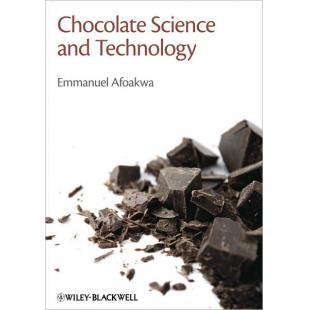
 收藏商品
收藏商品 分享
分享 加入购物车
加入购物车




